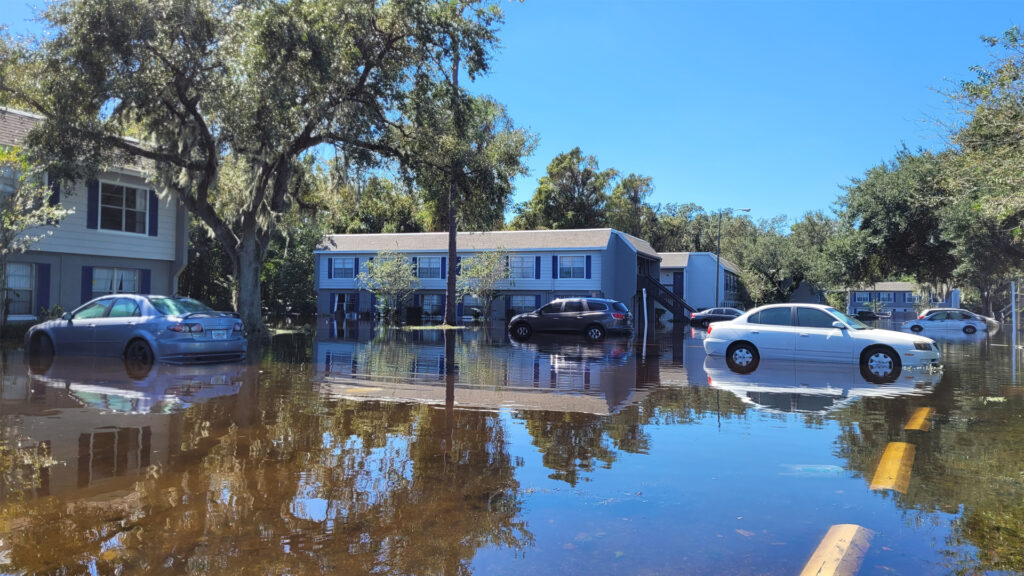By the Orlando Sentinel Editorial Board
For decades, it’s been a pervasive trope: Real Floridians don’t get flustered about violent tropical weather — they just load up on snacks and adult beverages, hunker down and ride it out, then saunter out the next day to fire up their chainsaws and gather debris.
Of course, that was never the case. The only Floridians who could afford to act with such blasé unconcern were either woefully ignorant — or already prepared, with barriers for windows and doors, adequate insurance coverage, stockpiles of necessary supplies and a plan that covered known contingencies. They understood that by the time the spaghetti maps and cones of uncertainty narrowed down to “headed straight for us,” it was far too late to make any meaningful preparations.
As recent storms have shown, however, threats are shifting. The annual hurricane season starts Thursday, but “hurricane-ready” in 2023 doesn’t look the way it did in 2013, due to one terrifying reality: The biggest threat to life and property is water, not wind — and few places in Florida are really safe from floods, though many residents, especially in communities miles from a coastline, haven’t come to grips with that peril.

Even the most headstrong climate change deniers can’t ignore the images of residents evacuating apartment complexes near the University of Central Florida in boats after Hurricane Ian, or scenes of unprecedented flooding throughout Broward County in April. As sea levels continue to rise and oceans grow warmer, big storms — named or not — will dump increasingly heavy loads of water across the state. Inland water bodies will overflow their banks, and the high, sandy soil that once allowed rainwater to rapidly sink into the ground (where it replenished the state’s supply of fresh water) is rapidly being covered with buildings and asphalt to accommodate more than 1,000 new residents a day.
All this — on the flattest state in the nation — spells trouble. Florida’s flood maps are seriously out of date; in reality, the entire state is a flood zone.
Evade a watery grave
The longstanding tradition of “hunkering down” from windstorms stems has an ancestor in the old saying: “Hide from wind, run from water.” Floridians who have relied on storm shutters, generators and other investments to protect themselves and their property from gale-force winds and subsequent power loss need to expand their plans to include the potential — even the likelihood — that sheltering in place will be an increasingly risky proposition. If heavy rainfall is a threat, then evacuation may be the only answer.
Ian’s death toll showed the stark new reality. Of the 109 lives claimed directly by that historic storm, more than 60% drowned. Almost all of those were in coastal areas and occurred in the hurricane’s initial surge. As storms become more violent, those surges will reach further inland — with floodwaters swamping one-story structures.
Every Floridian needs an evacuation plan and the resolve to get out of the way of storms that could bring heavy rainfall. Everyone needs a checklist of things to pack in an evacuation — food, medicine, pets, essential documents and more — and when emergency management officials say it’s time to go, go.
One more policy
The changing threats also mean new costs — starting with insurance.
By most estimates, fewer than 20% of Florida property owners buy flood insurance. That’s not hard to understand: The cost of property insurance has skyrocketed in the state, and the Legislature and Gov. Ron DeSantis have responded with insultingly inadequate measures that mostly protect insurance companies’ profit margins. And they’ve mostly ignored reports of increasingly anti-consumer trends, such as a recent Washington Post investigation that found several insurance companies delaying and denying valid claims.
Asking Floridians to pay even more for flood insurance when they live on property they’ve always considered to be “high and dry” is a hard sell, compounded by the fact that many state leaders aren’t being realistic about the threats of flooding.
But going without could leave home and business owners lacking coverage they desperately need.
The good news is that — for now — flood insurance is relatively inexpensive. Floridians who don’t have this coverage should add it, if possible.
One thing, however, will never change. Living in Florida carries a responsibility: You are your own first line of self-defense. That doesn’t absolve state leaders who play politics with climate change or cater to special interests with deep pockets — but nothing can replace household-by-household preparation.
It’s still a good idea to stock up on essentials — flashlights, nonperishable food, tarps and portable generators, medicines and pet supplies. It’s smart to inspect roofs and trim dangerous limbs from trees, install storm shutters or invest in plywood to cover windows and doors.
Floridians must add one more reality, however: None of those things will work if they’re under water. And no matter where a property is located, the threat of flooding can no longer be dismissed.
This opinion piece was originally published by the Orlando Sentinel, which is a media partner of The Invading Sea. The Orlando Sentinel Editorial Board consists of Opinion Editor Krys Fluker, Editor-in-Chief Julie Anderson and Viewpoints Editor Jay Reddick.
If you are interested in submitting an opinion piece to The Invading Sea, email Editor Nathan Crabbe at ncrabbe@fau.edu. Sign up for The Invading Sea newsletter by visiting here.



